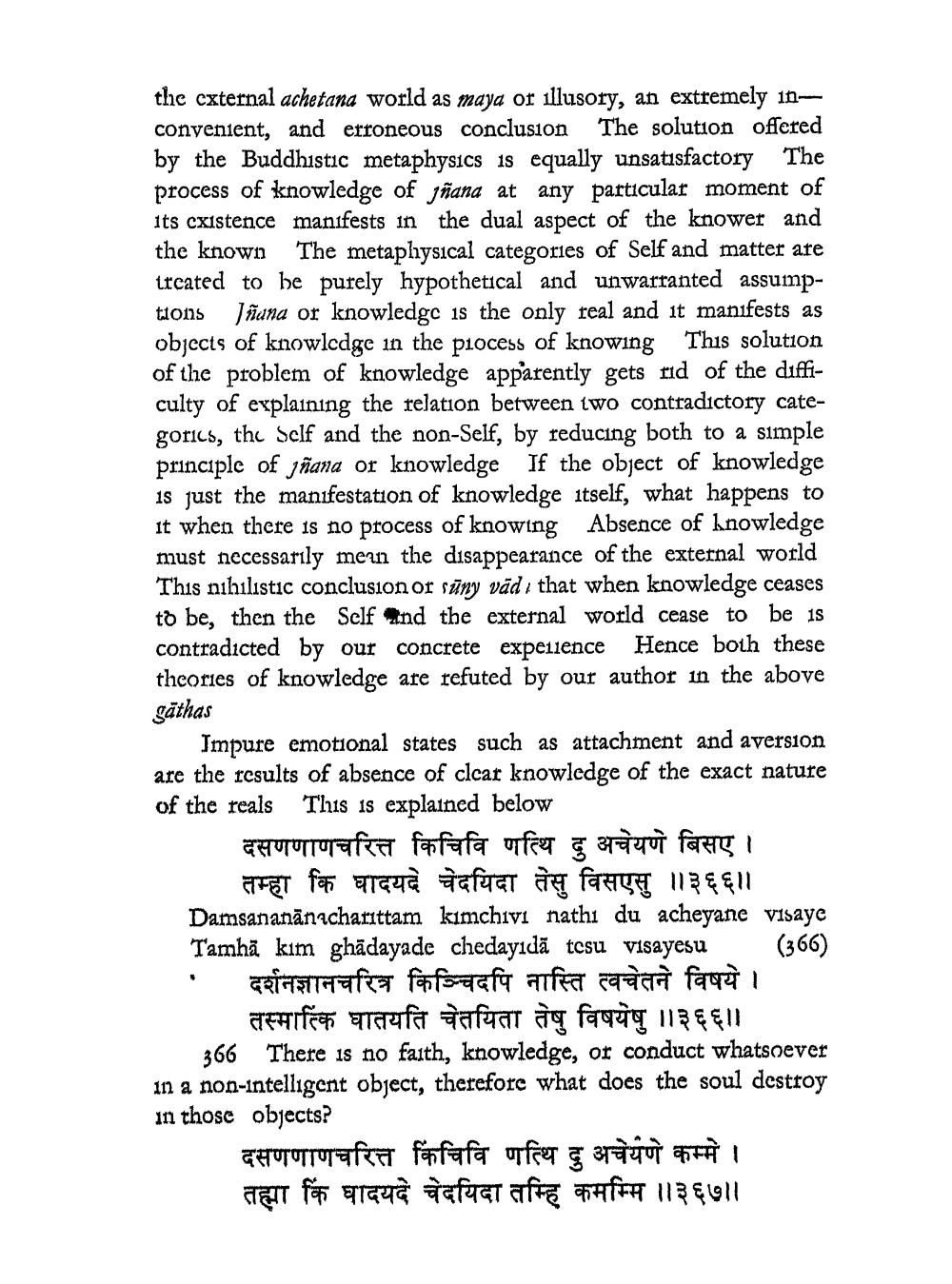________________
the external achetana world as maya or illusory, an extremely inconvenient, and erroneous conclusion The solution offered by the Buddhistic metaphysics is equally unsatisfactory The process of knowledge of jñana at any particular moment of Its cxistence manifests in the dual aspect of the knower and the known The metaphysical categories of Self and matter are treated to be purely hypothetical and unwarranted assumptions Jñana or knowledge is the only real and it manifests as objects of knowledge in the process of knowing This solution of the problem of knowledge apparently gets rid of the difficulty of explaining the relation between two contradictory categorics, the Self and the non-Self, by reducing both to a simple principle of jñana or knowledge If the object of knowledge is just the manifestation of knowledge itself, what happens to it when there is no process of knowing Absence of knowledge must necessarily mean the disappearance of the external world This nihilistic conclusion or suny väd that when knowledge ceases to be, then the Self and the external world cease to be is
contradicted by our concrete experience Hence both these theories of knowledge are refuted by our author in the above gathas
Impure emotional states such as attachment and aversion are the results of absence of clear knowledge of the exact nature of the reals This is explained below
दसणणाणचरित किचिवि णत्थि दु अचेयणे बिसए । तम्हा कि घादयदे चेदयिदा तेसु विससु ॥३६६॥ Damsanananacharittam kimchivi nathi du acheyane visaye Tamha kim ghädayade chedayıda tesu visayesu दर्शनज्ञानचरित्र किञ्चिदपि नास्ति त्वचेतने विषये । तस्मात्कि घातयति चेतयिता तेषु विषयेषु || ३६६॥
(366)
366 There is no faith, knowledge, or conduct whatsoever in a non-intelligent object, therefore what does the soul destroy in those objects?
दसणणाणचरित किंचिवि णत्थि दु अचेयेणे कम्मे । ता किं घादयदे चेदयिदा तम्हि कमम्मि ॥ ३६७॥




